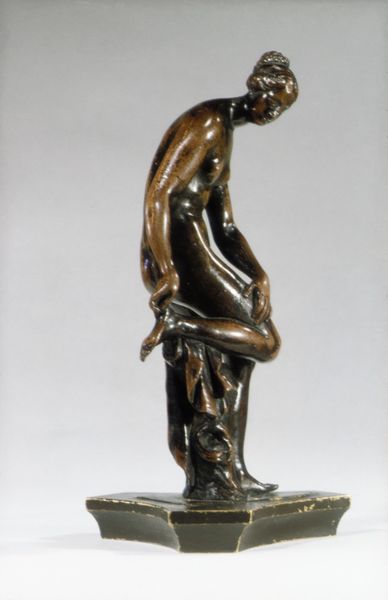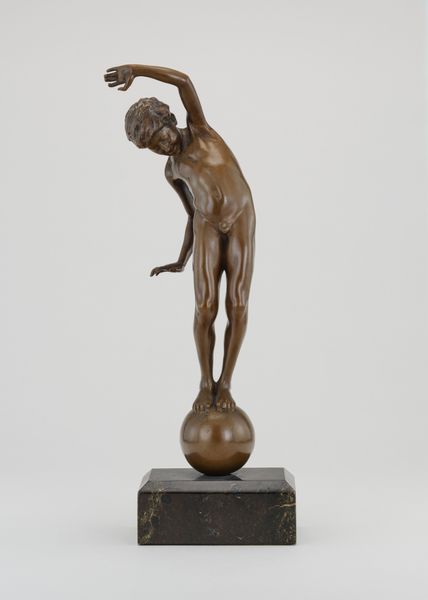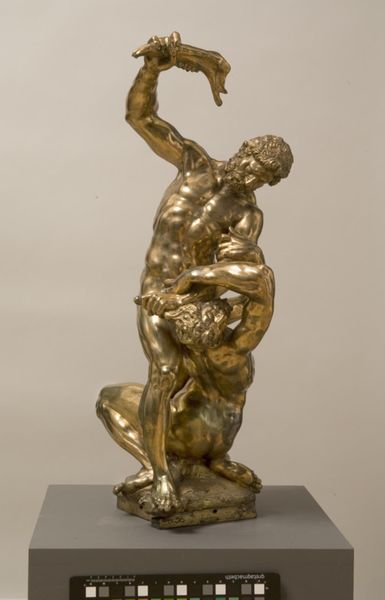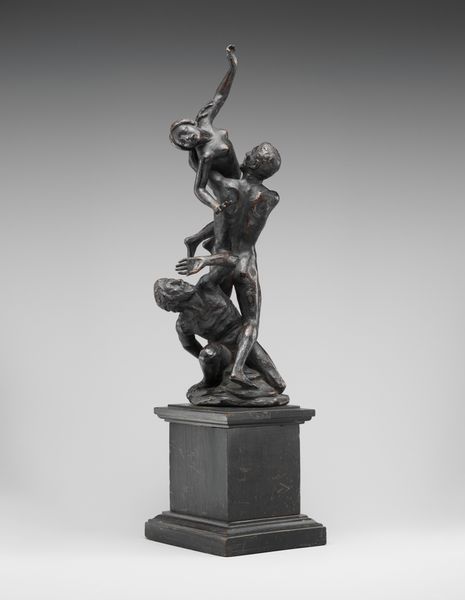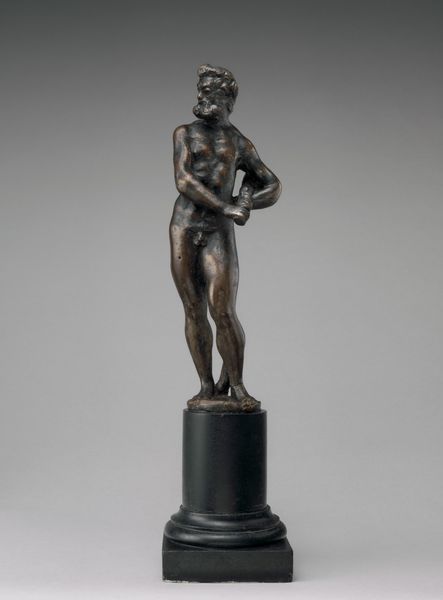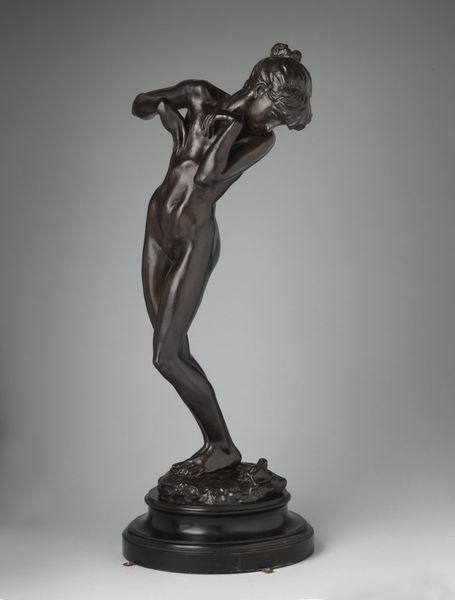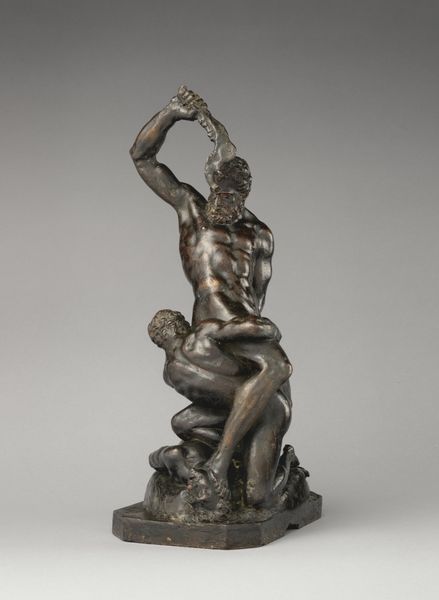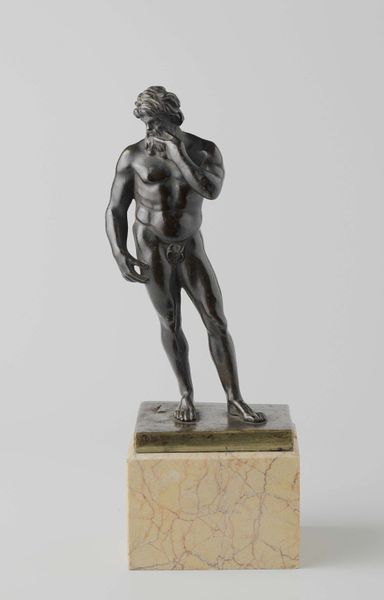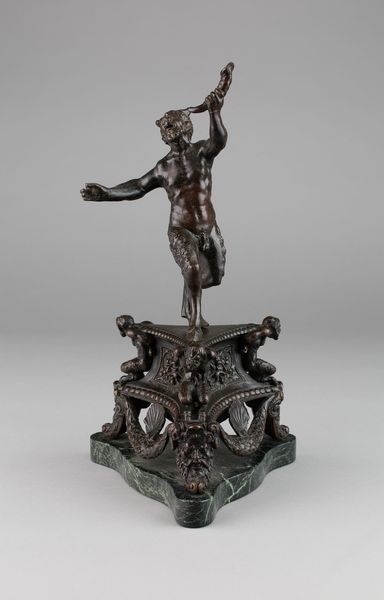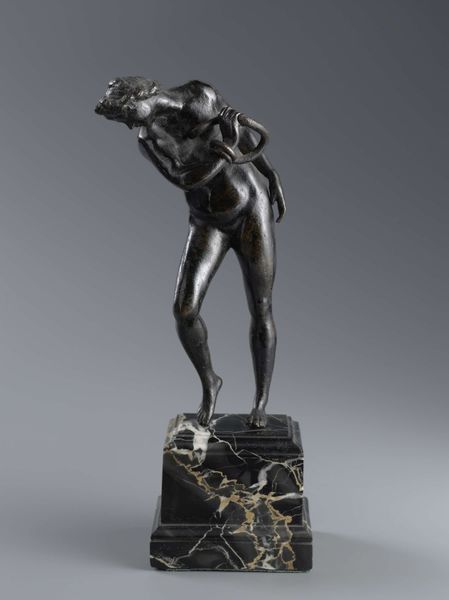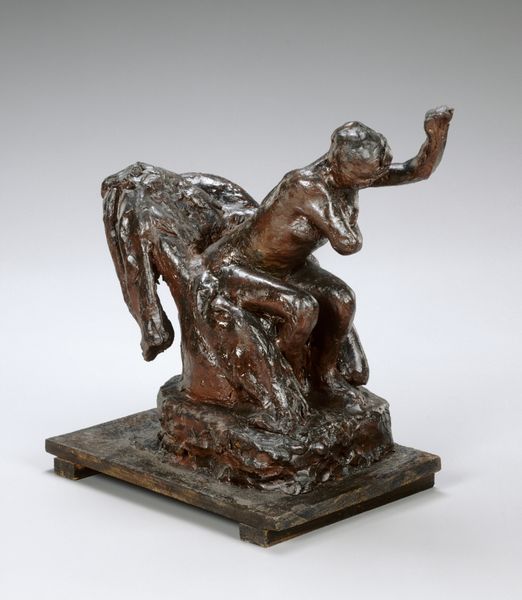
Dimensions: object: 498 x 355 x 280 mm
Copyright: CC-BY-NC-ND 4.0 DEED, Photo: Tate
Curator: Thomas Woolner's bronze sculpture, "Puck," presents a winged figure standing triumphantly on a turtle being strangled by a snake. Editor: I’m struck by the dark patina. It evokes a sense of mischief, but with a definite undercurrent of something unsettling. Curator: Puck, of course, is Shakespeare's sprite, a figure of folklore embodying duality—mischief and malice, nature and culture. Woolner seems to capture that tension. Editor: It’s interesting how this reflects Victorian anxieties about nature – the conquering of wild, untamed forces. The subjugation of the snake and turtle becomes a symbol of Victorian dominance. Curator: And consider the snake, a universal symbol of temptation and chaos. Puck's victory here is not just physical, but a psychological triumph over base instincts. Editor: A potent symbol, yes, but one framed by the era's colonial mindset. It makes you consider who defines what is "tamed" versus what is "wild." Curator: It seems Woolner captured a very complex cultural moment in a single statue. Editor: Indeed, a potent piece and a lens through which to view shifting societal values.
Comments
Join the conversation
Join millions of artists and users on Artera today and experience the ultimate creative platform.
tatebritain 7 months ago
⋮
Puck is a mischievous invisible fairy in Shakespeare’s A Midsummer Night’s Dream. Thomas Woolner has illustrated a scene here from an ‘Imaginary Biography’ of Puck. He alights on a mushroom to save a sleeping frog from a hungry snake. The sculpture captures the instant before a sudden movement – as Puck touches the frog with his foot it will jump away just before the snake attacks.Ideal or poetic subjects drawn from literature, mythology or history, were highly regarded by sculptors in the mid-nineteenth century. Gallery label, July 2007
